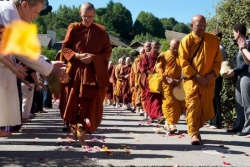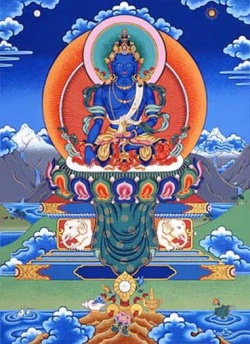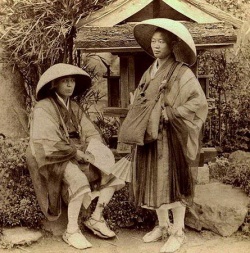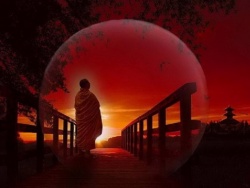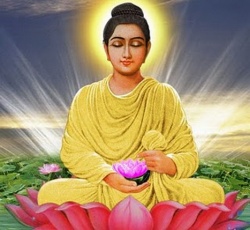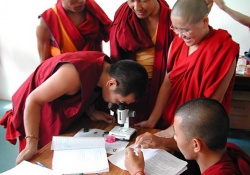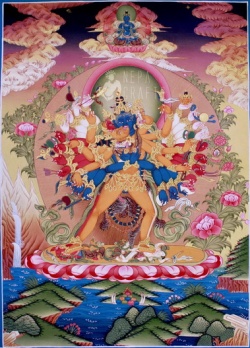Basics of Tibetan Medicine: Three Humors
The fundamental bases of Tibetan medicine are teachings about three principles of life-force (often called dosha or humors) - rLung (pron. Loong)(Wind), mKhris-pa (pron. Tree-pa) bile, and Bad-kan (pron. Pay-gen) (phlegm).
They represent combinations of 5 basic elements (earth, water, fire, wind, akasha (space)).
If these elements are in good harmony and balance – the person is healthy.
But misbalance of doshas and elements is known as a sickness or disorder.
Tibetan medicine differentiates 2 main types of disorders: disorders from could and disorders from heat.
But both of them arise from the mind. Obscurations of mind, passions, initiate disorder of the Wind (rLung), anger initiates imbalance of Bile (mKhris-pa) and anger initiates imbalance of Phlegm (Bad-kan).
Each of them can be divided to 5 basic functions or forces:
1.Wind (rLung)
- Life supporting;
- Up moving; - All-pervading;
- Accompanying fire ; - downwards purifying;
2.Bile (mKhris-pa)
- Digestive; - Colour changing;
- Creative; - Visible;
- Purifying the colour of a face;
3.Phlegm (Bad-kan)
- Supporting;
- Mixing (food and drink)
- Gustation (Taste)
- Satisfying
- Connecting (joints)
Each humor (dosha) has its corresponding functions and priorities in a human body:
1.Wind supports inhalation and exhalation, gives strength to a body to move, manage movements of physical powers inside body, gives clarity to organs of senses and directs the body. Wind is mostly grounded in sacrum, loins and lower part of the body.
2.Activity of Bile ensures feelings of hunger and thirst,affects the process of nutrition and digestion bile generates warmth in body, displays clears the complexion,gives a person the courage and intelligence.Bile rests on the diaphragm and is located in the middle of the body.
3.The action of the Phlegm (bedken)strengthens the body and mind, the strength of the joints,provides softness and lubricity to the body.The phlegm rests on the brain and is located in the upper part of the body.
The channels through which a wind, bile and phlegm moves throughout a human body are:
a)powers: humors, blood, flesh, fat, bone, bone marrow, semen
b)residue(feces, urine, sweat, nails, hair, ear wax and excrements of the body
c)senses dense organs (heart, lungs, liver, spleen, kidneys)
d)hollow organs(stomach, gall bladder, small intestine, bladder,testis
If we research how imbalance of humours is forming, we can conclude that:
1.Diseases of the Wind accumulate in the spring and begin to manifest in the summer, in the evenings (from 14 to 18 h.)at dawn(from 2 to 6:00.)
2.Diseases of Bile accumulate in the summer and activates at autumn, noon 10 to 14 hours) and at midnight(from 22 to 2 hrs.)
3.Diseases of Phlegm accumulate in the winter and in spring manifest to the outside. They are also active at dusk(from 18 to 22h.)And in the morning(from 6 to 10 hours.).
According to Tibetan Medicine there are 4 fundamental conditions that can cause the accumulation or exhaustion of that or another dosha, to invoke a disease:
- Climatic conditions
- Chronic diseases
- Provocations of evil spirits
- Karmic diseases
Also diseases can be induced by wrong nutrition and livelihood.
By climatic conditions we understand also cooling in a low temperature or overheating in the sun.
A disease can be provoked by the energy of a one dominant dosha of particular season, what can lead to imbalance of doshas or some more complex health problems.
For example, in winter season the phlegm is dominant, but in spring the wind dominates, regardless of temperature, humidity or location, and can bring the humours of wind into misbalance.
Imbalance of cold humours of phlegm and wind can lead to exacerbations of chronic(cold) disorders.
The main healing methods in Tibetan medicine are: - nutrition; - livelihood; - medicine; - mantras.
The mantra for disorders of the Wind is:
Om Darda Sarna Hum Pad
The mantra for diseases of the Bile is:
Om Ri Vaz Nay Li Di Soha
The mantra for diseases of the Phlegm is:
Om Shandi Shandi Arva Bidi Muda Nyag Soha
